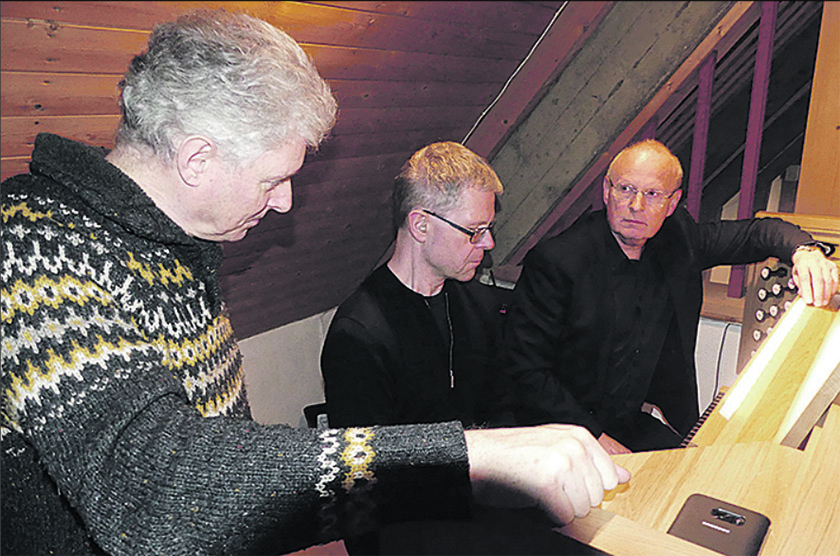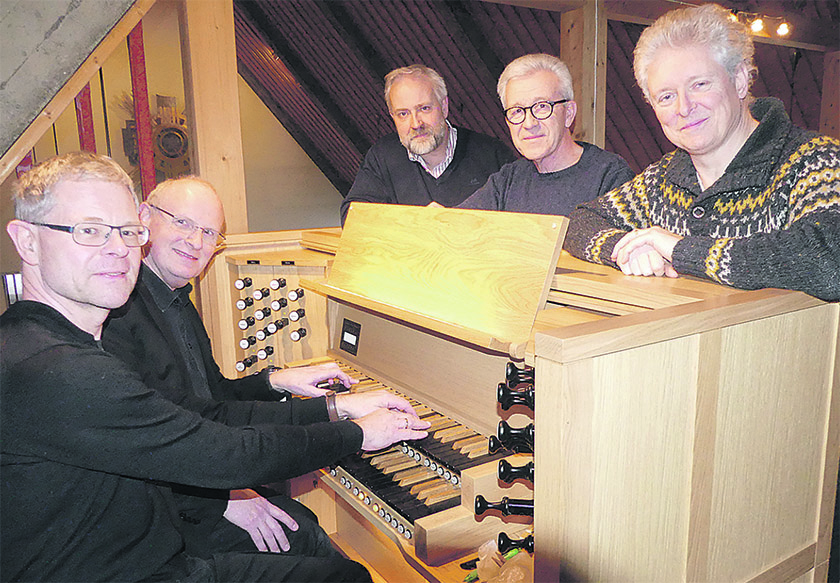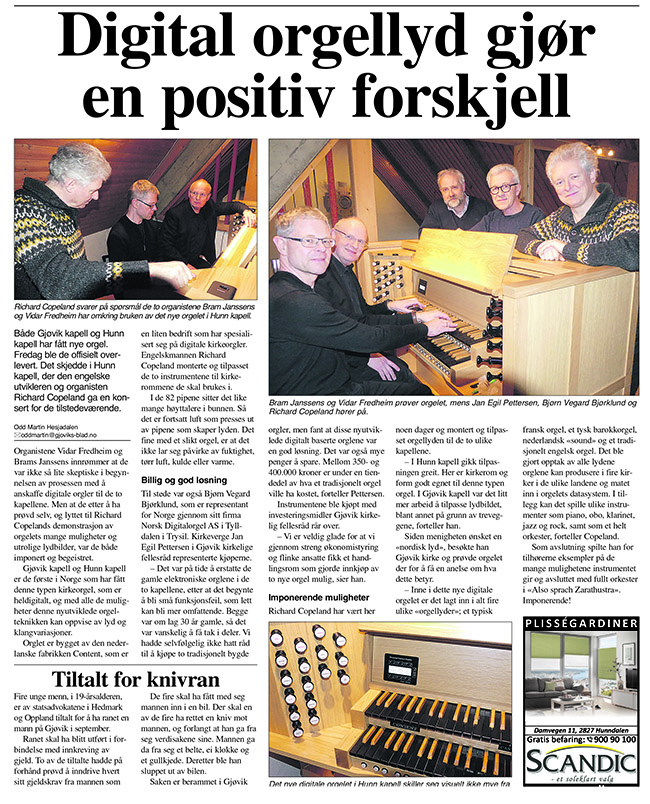







|







|
| Digital Organs Make a Positive Difference!
(Written for Norwegian paper by Odd Martin Hesjadalen, oddmartin@gjoviks-blad.no - translated by Elizabeth Copeland) Both Gjøvik Chapel and Hunn Chapel have had new organs. On Friday they were officially handed over to the town, during which the English developer and organist Richard Copeland gave a concert for the assembled audience. The chapel organists Vidar Fredheim and Brams Janssens admit that they were not a little sceptical at the beginning of the process of acquiring digital organs for the two chapels. However, after they have played the organs and listened to Richard Copeland's demonstration of the organ's many possibilities and incredible sound images, they were both impressed and enthusiastic. Gjøvik Cemetery Chapel and Hunn Crematorium Chapel are the first in Norway to get this type of church organ which integrates digital technology with digital pipes. These instruments are fully digital and with all the possibilities that newly developed organ technology can present in relation to sound and variation of resonance. The organs are built by the Dutch factory Content Orgels who collaborate with the German loudspeaker designer Kienle to provide specialist instruments especially for situations like these. The Englishman Richard Copeland installed and voiced the two instruments especially for the church spaces in which they are to be played. On each organ, underneath the 82 display pipes, there are a matching number of speakers. So it is still air (resonated by the speakers beneath) which is imparted through the pipes that creates the sound. The great thing about these organs is that they do not need regular tuning or maintenance, and are not affected by low humidity, cold or heat, thus providing an economic and good solution. Present was also Bjørn Vegard Bjørklund who is the Content organ dealer for Norway via his firm Norsk Digitalorgel AS which is located in Tylldalen in Trysil. Churchwarden Jan Egil Pettersen from Gjøvik church committee represented the buyers. It was high-time to replace the old electronic organs in the two chapels after they began to show signs of malfunctioning which can easily become more expensive and troublesome. Both organs had been worked hard and were over 30 years old so it was difficult to get parts. Naturally we could not afford to buy two traditionally built pipe organs and we found that these newly developed digitally based organs were a good solution. There was also much money to be saved. These digital/pipe organs cost between 350,000 and 400,000 NrK which is under a tenth of what a traditional wind-blown pipe organ would have cost; Pettersen explains to us that the instruments were funded using development funds which Gjøvik church community already possessed. “We are very happy that we got the possibility to acquire these organs through our strict financial management and clever employees”, he says. Impressive possibilities Richard Copeland has been here for a number of days and installed and adapted the two new organ’s sounds for the two different chapels. Inside the Hunn Chapel the voicing and installation went smoothly. Here the church space and shape is well-suited for the organ. Inside Gjøvik chapel there was a little more work to do to adapt the sound image, due to the wooden walls and consequent absorbent structure, he explains. As the congregations wished for a 'Nordic sound', he visited Gjøvik church and played the pipe organ there to familiarise himself with the sound of a Norwegian instrument. Each of the two new digital organs contain four different organ styles inside; a typical French organ, a German baroque organ, the Dutch classical organ sound and a traditional English organ. Many thousand digital recordings were made, in the four churches in the various countries, of all the pipes which the organs have and then these are programmed into the organs' computer systems. In addition to this, the two instruments have ‘Extravoice’ sound modules installed which enable them to play other instruments like piano, oboe, clarinet, jazz (Hammond) organ, theatre organ and rock organ, and also programmes which sound like a whole orchestra, Copeland explains. As a finale he played examples for the audience of the many possibilities that the instruments can provide and ended with a full orchestral arrangement, in addition to the organs’ sound, playing Richard Strauss’ "Also Sprach Zarathustra". Impressive! 
Richard Copeland answers questions from the two organists Bram Janssen and Vidar Fredheim about the use of the new organ in Hunn Chapel. 
Bram Janssen and Vidar Fredheim test the organ while Jan Egil Pettersen, Bjørn Vegard Bjørklund and Richard Copeland are listening. The new digital organ in Hunn Chapel does not look very different from a traditional organ. 
|